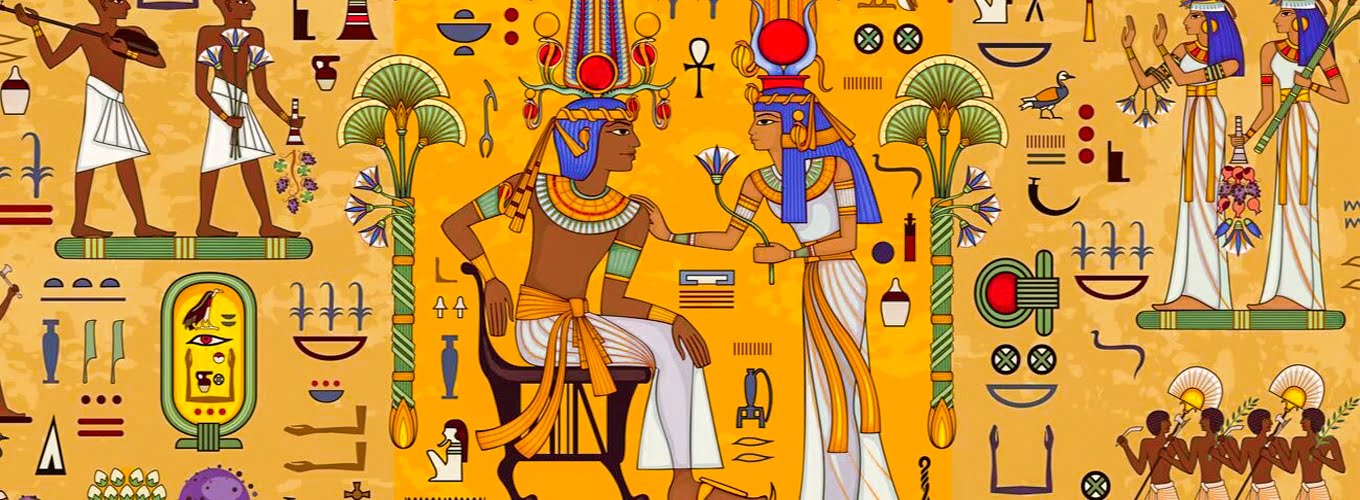Are you poised to welcome prosperity and good luck into your life? Embark on a journey through the realm of Ancient Egyptian Good Luck Symbols! Through the annals of history, numerous cultures have fostered beliefs and symbols linked to luck and safeguarding. Among these Good Fortune Symbols, the good luck fortune symbols charms hold a unique significance.
The ancient Egyptians deeply revered their symbols of luck and good fortune, believing in their power to draw in prosperity and avert malevolence. The Egyptian culture, celebrated for its elaborate symbolism, is a treasure trove of good luck icons embedded in its ancient art and mythology. These Egyptian Symbols, closely entwined with Egyptian faiths and practices, have intrigued people worldwide for generations.
1- The Wadjet or Eye of Horus
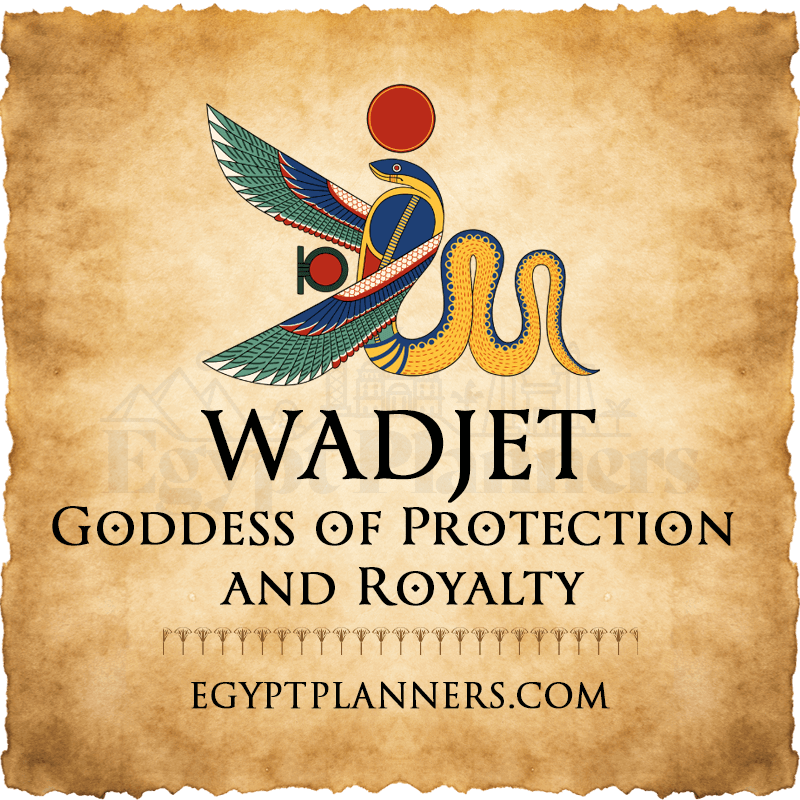
Renowned among Egyptian symbols for attracting positive energies, the Eye of Horus epitomizes protection, healing, and wellness. It was thought by the ancients that its unique eye-like shape could repel malevolence and invite prosperity. Linked to the celestial deity Horus, this symbol was esteemed for its purported restorative capabilities.
2- The Scarab Beetle
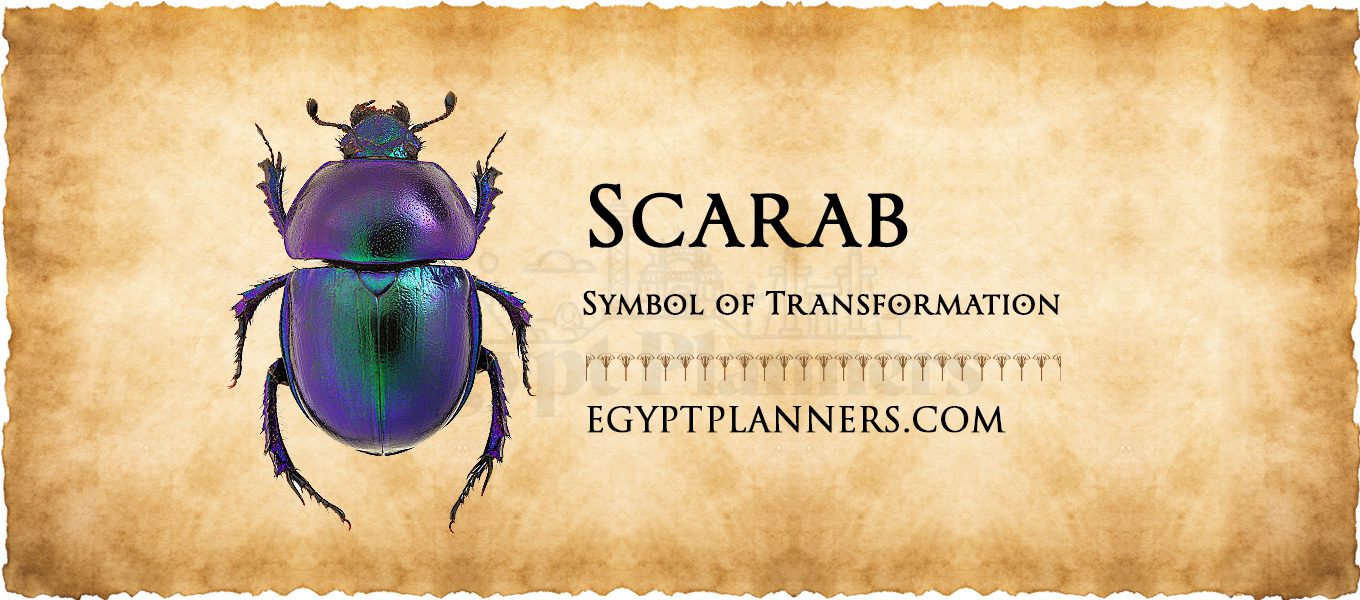
Representing renewal, metamorphosis, and safeguarding, the scarab beetle, also known as Khepri, was revered in Egyptian culture. The belief that it pushed the sun across the heavens daily underscores its connection to the lifecycle and the diurnal movement of the sun, imbuing the scarab with the potent ability to foster good fortune and avert harm.
3- The Ankh
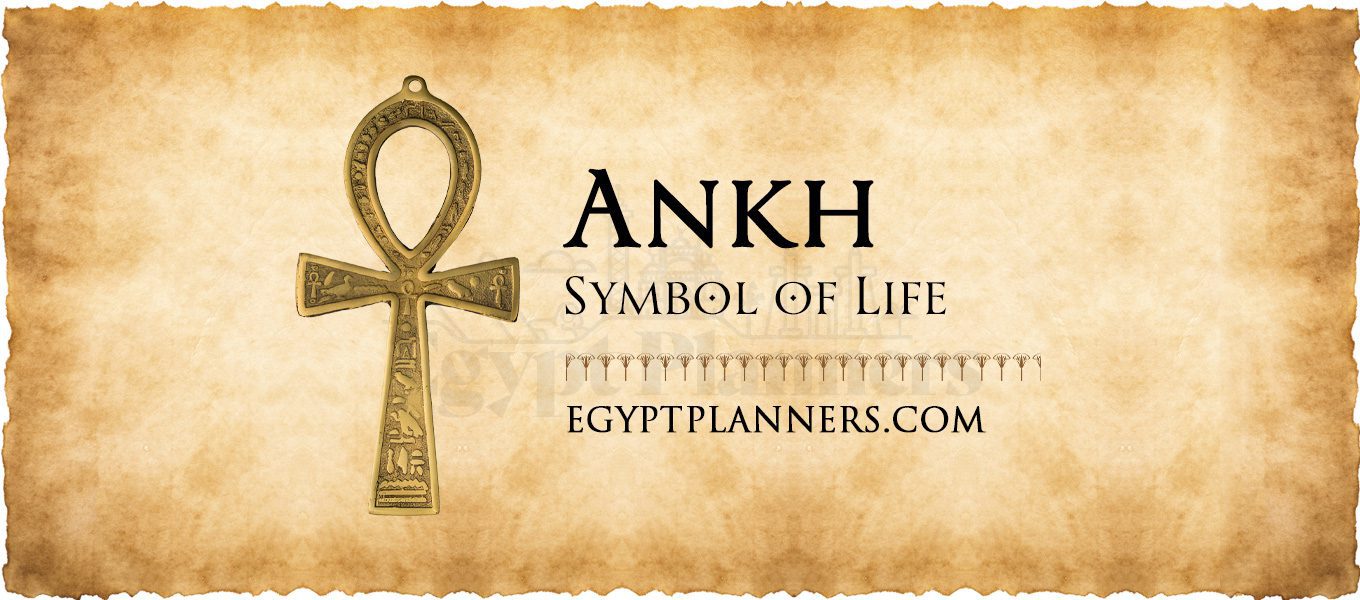
The Ankh, celebrated as the “Key of Life,” stands as a testament to immortality, fecundity, and vigor. Its cross-like form with a loop atop embodies a harmonious blend of masculine and feminine aspects, symbolizing the balance of opposites. Deities and sovereigns frequently bore the Ankh, highlighting their celestial might and affinity with the hereafter.
4- The Djed Pillar

Symbolic of resilience, longevity, and steadiness, the Djed pillar, reminiscent of a pillar with four crossbars, is closely linked to Osiris, the deity of the afterworld. It is believed to represent Osiris’s backbone, conferring protection, stability, and abundance. Its imagery was a common sight in burial sites and amulets.
5- The Cartouche

The cartouche, an oval loop encasing the names of royals and dignitaries, conveys notions of infinity and sovereign prerogative. Adorned with complex hieroglyphs that denote the ruler’s appellation or distinctions, it acts as a potent emblem of their noble heritage and divine affiliations, safeguarding the ruler’s name for eternity. Presently, the cartouche remains a symbol of fortune and the enduring majesty of Egypt’s monarchs.
6- The Sistrum
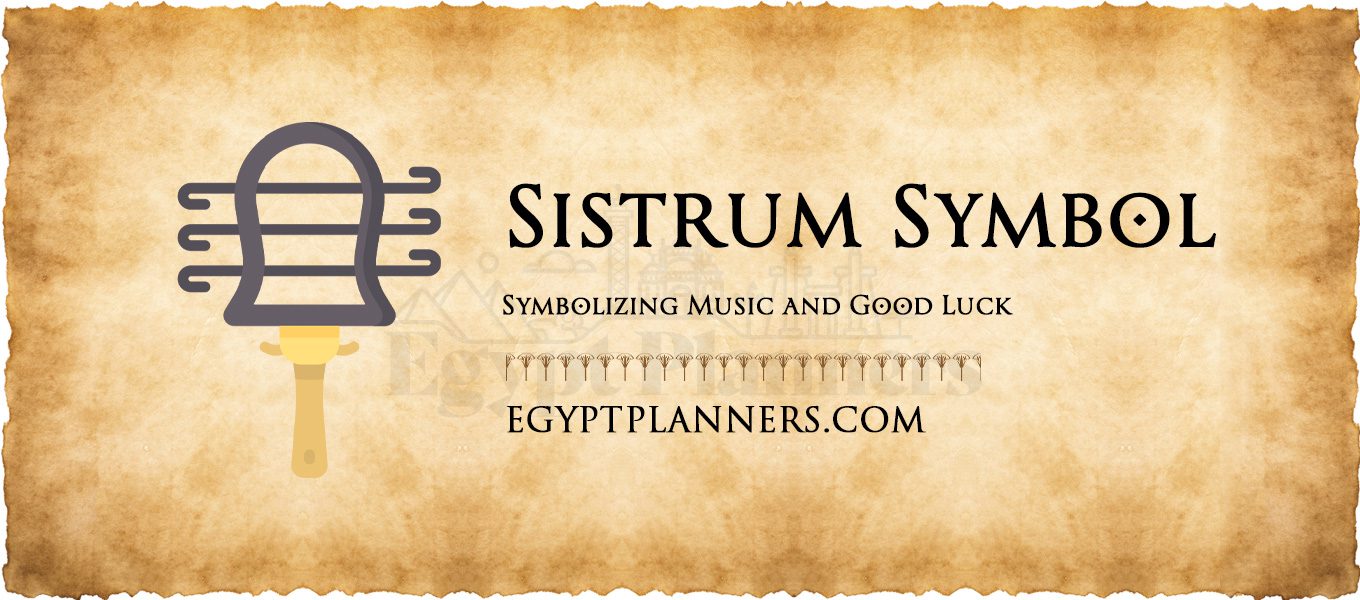
This musical instrument, akin to a hand-held shaker, was linked with Hathor, the goddess of mirth and fortune, believed to induce joy, felicity, and luck. Utilized in sacred rites and festivities, its sound was thought to banish malevolent forces and beckon divine favor.
7- The Lotus Flower
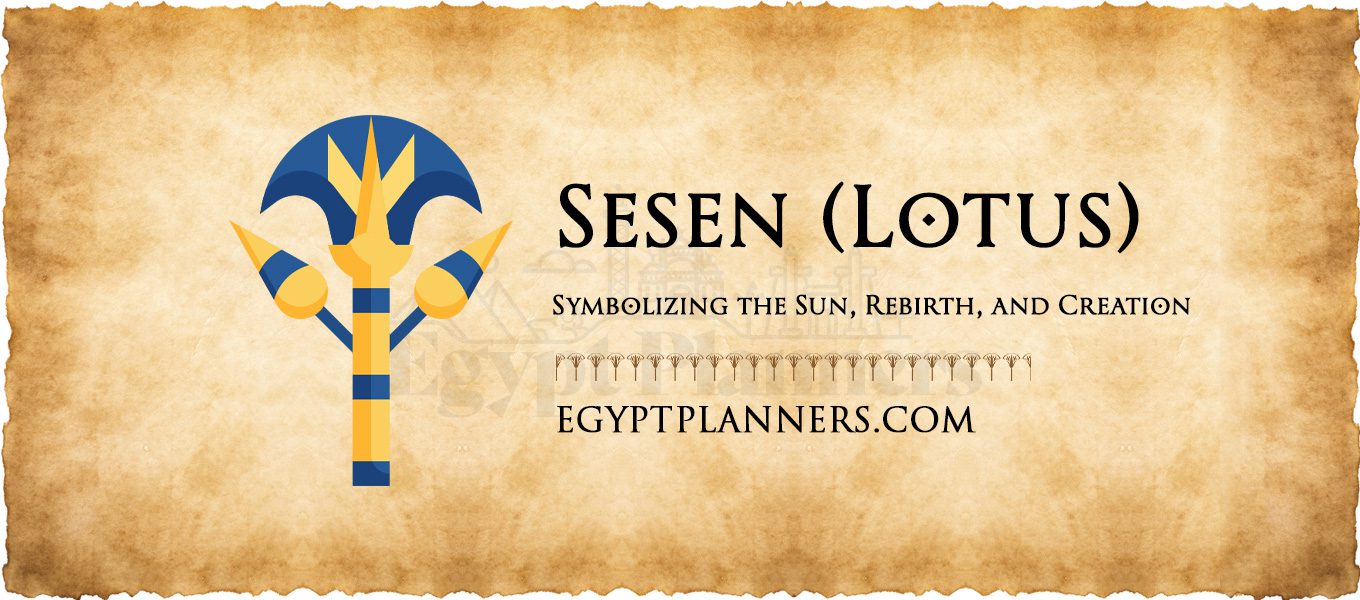
In Egyptian lore, the lotus flower is esteemed for symbolizing rebirth, sanctity, and spiritual awakening. Frequently depicted as arising from the primeval waters, it signifies creation and life’s commencement. Its daily cycle of closing at dusk and blooming at dawn renders it a powerful emblem of rejuvenation, fortune, and the unending rhythm of existence.
8- The Udjat (Eye of Ra)
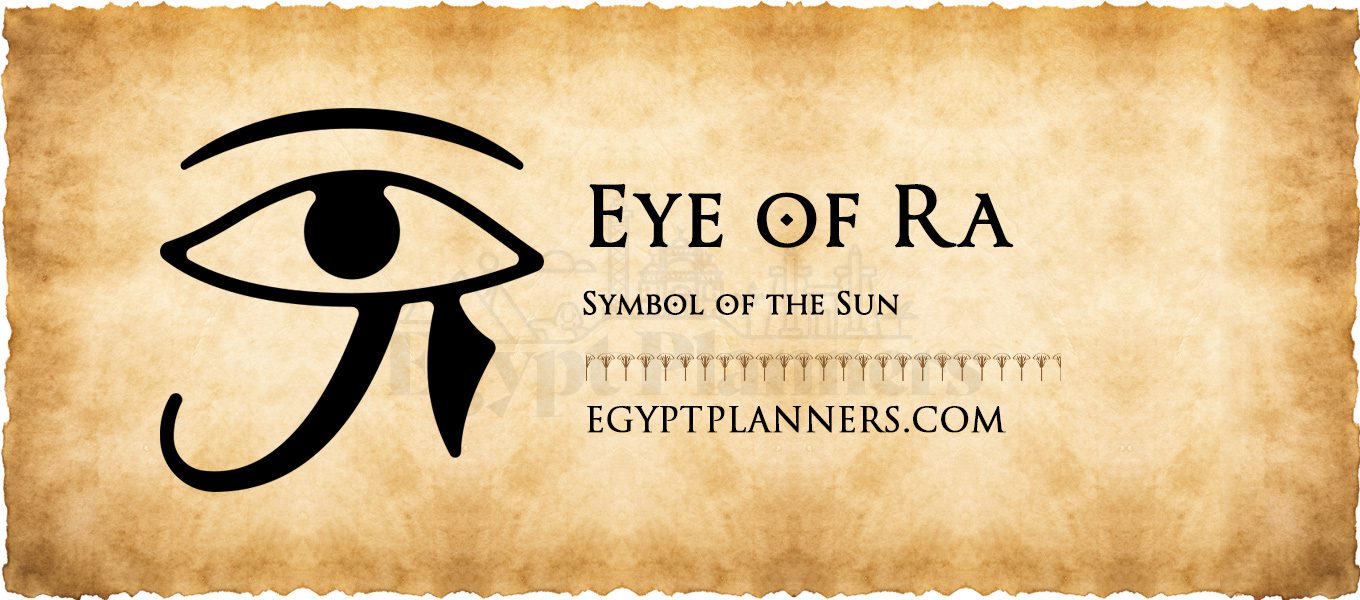
The Udjat, or the Eye of Ra, emblematic of the solar deity’s vigilant and protective gaze, stands for the sun’s might to vanquish the darkness, deter malevolence, and procure blessings. Often illustrated as a colorful, falcon-adorned eye, it reflects Ra’s safeguarding and omniscient vision.
9- The Shen Ring
A loop with a distinctive knot, the Shen ring symbolizes unendingness and perpetuity, echoing the idea of divine safeguarding and omnipotent power. Worn by divinities and monarchs, it denoted their boundless dominion and auspiciousness, also reflecting life’s eternal cycle, where endings give way to new beginnings.
10- The Tyet Knot
Also known as the Knot of Isis or the Blood of Isis, the Tyet knot is an amulet of protection, restoration, and fecundity, featuring a unique knotted design with extending loops. Tied to the goddess Isis, renowned for her profound magical and curative abilities, it underscores the enduring essence of protection and vitality.
11- The Feather of Ma’at
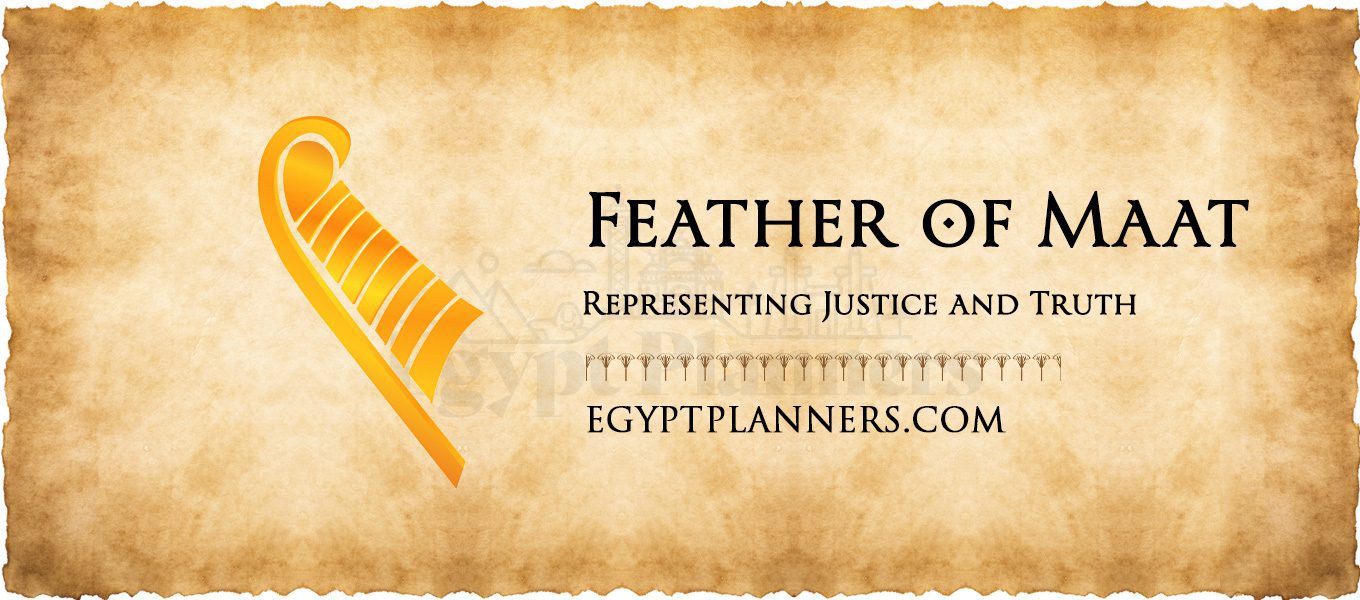
Symbolizing truth, justice, and the cosmic order, the Feather of Ma’at plays a pivotal role in the afterlife judgment process in ancient Egyptian belief. The heart of the deceased was weighed against the feather to determine their worthiness for the afterlife. This emblem underscores the Egyptians’ deep respect for moral integrity and the balance between right and wrong, serving as a guiding principle for the living and the deceased alike.
12- The Crook and Flail
Representing the dual aspects of kingship, the crook and flail were symbols of the pharaoh’s power and responsibility. The crook, resembling a shepherd’s staff, symbolized the pharaoh’s role as the shepherd of his people, guiding and protecting them. The flail, on the other hand, represented fertility and the pharaoh’s ability to ensure the prosperity of his land. Together, they underscored the ruler’s duty to both protect and provide for his subjects.
13- The Ouroboros
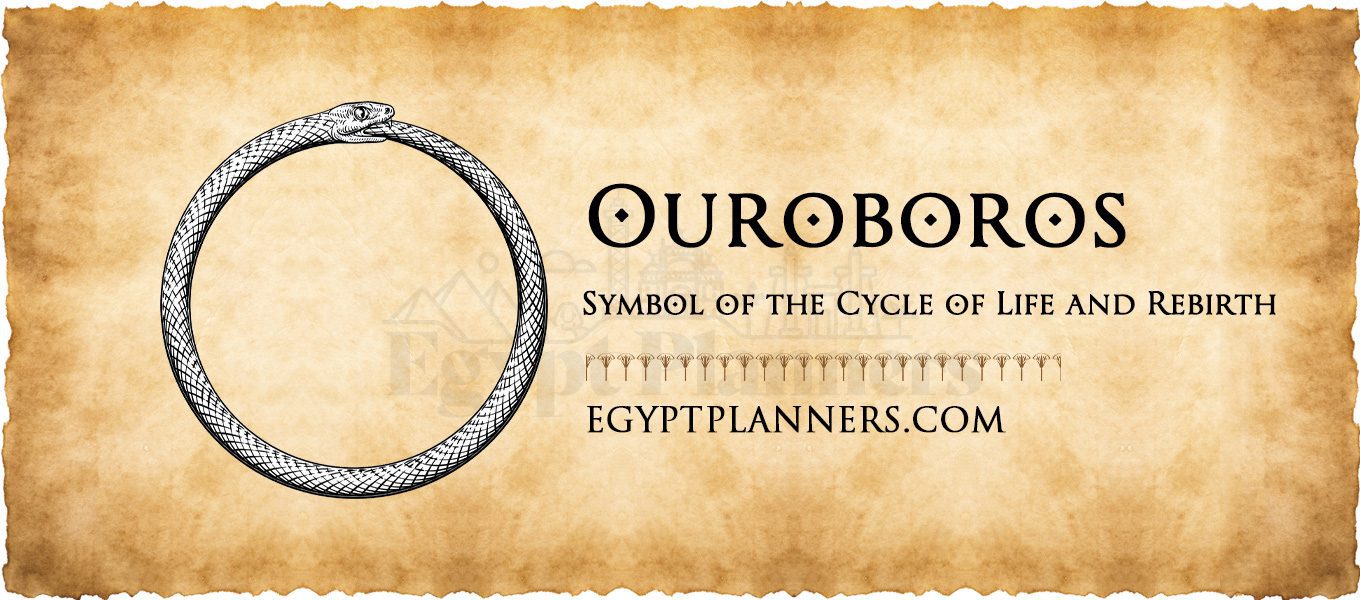
The Ouroboros, a serpent eating its own tail, is a symbol of eternity, cyclicality, and the perpetual renewal of life. Originating in ancient Egyptian iconography and adopted by other cultures over time, it represents the unending cycle of nature’s destruction and rebirth. This ancient symbol reminds us of the interconnectedness of all things and the constant state of flux within the universe.
14- The Was Scepter
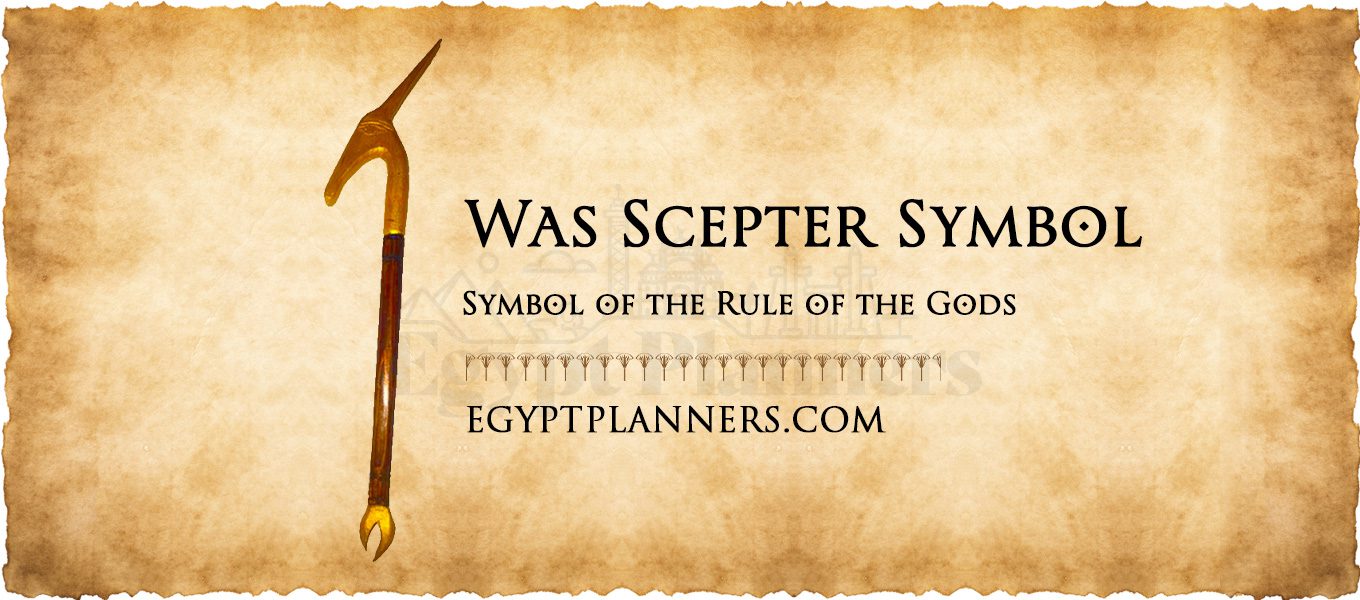
A symbol of power and dominion, the Was scepter is depicted as a staff with a stylized animal head and a forked base. It was carried by gods, pharaohs, and priests as a sign of authority over the material and spiritual worlds. The Was scepter signifies the bearer’s ability to command the forces of chaos and maintain order, reflecting the central role of leadership in sustaining the cosmos’s balance.
15- Bast ( Cat Goddess)
Bast, also known as Bastet, is the ancient Egyptian goddess often depicted in the form of a lioness or as a woman with the head of a domestic cat. Revered from the Second Dynasty onward, Bast symbolizes protection, pleasure, and the bringer of good health. As a sun goddess, she embodies the warmth and life-giving power of the sun’s rays, initially associated with fierce warfare but later became known as a protector of homes and a guardian against evil spirits and disease.
Related Articles
